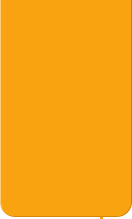



Language Arts: Punctuation - Tutorial
Some Helpful Tools
End Marks
Comma (,)
Use a comma to set off an appositive.
A sentence always begins with a capital letter and ends with either, a period, a question mark, or an exclamation mark. Each one of these end marks serves a different purpose in a sentence.
Use a comma to separate numbers.
Apostrophe (')
Colon (:)
Semicolon (;)
Quotation Marks (" ")
The dash adds a longer pause than a comma for dramatic effect.
Hyphen ( - )
Use the hyphen when two adjectives that act as a single adjective are used to describe one noun.
Parentheses ( )
Parentheses are used to set information apart from the rest of a sentence.
Ellipsis (...)
Use an ellipsis to show that some of the text has been left out.
This section will identify punctuation marks and how they are used.
Period (.)
A period is placed at the end of a complete sentence.
A.M.
Dan Tanner, Jr.
P.S.
Sandy bought a new pair of shoes.
A period is placed after most abbreviations.
Question Mark (?)
Shelly asked, "When does the bus arrive?"
A question mark is not placed after an indirect question because the question is not the exact words of the speaker.
Shelly asked when the bus arrived.
This is a statement made by someone else about the question Shelly asked.
Exclamation Mark (!)
Ouch! That pan is hot!
Be careful not to overuse exclamation marks.
Thank you!!!!!!!!
Mr. Salinger
Mrs. Brady
Dr. Landis
A comma is used with a coordinating conjunction to join two independent
clauses.
It was raining, but the sun was shining.
Place a comma after an introductory dependent clause.
When Kate returned home, she found a large package outside her door.
Use a comma after listing a series of items.
Matthew bought a package of cookies, a bag of chips, and a case of soda
for the road trip.
No comma is needed when only two items are listed.
Matthew bought a package of cookies and a bag of chips.
Place a comma between two adjectives when used to describe one noun.
Only use a comma when the word and can be substituted for the comma and sounds natural.
Mona likes her warm, cozy blanket on a snowy day.
The sentence above can be rewritten as:
Mona likes her warm and cozy blanket on a snowy day.
Since this sounds natural, a comma can be substituted for the word and.
Unlike the following sentence.
Mona has a shiny, red Corvette.
It doesn't sound natural to say:
Mona has a shiny and red Corvette.
Therefore, the sentence can be written as:
Mona has a shiny red Corvette. (The comma has been omitted.)
Janet, our new neighbor, is a famous author.
Use a comma with a direct quotation.
"Please be seated," said the principal.
Use a comma when writing the date.
Shelly was born on March 2, 1985.
Place a comma between a city and a state.
He lives in Cheyenne, Wyoming.
Use a comma at the opening and closing of a letter.
Dear Veronica, (for personal letters only)
Sincerely,
There was a total of 25,572 people at the event this year.
Use an 's to show ownership for a singular noun.
the girl's books
If the plural noun doesn't end in -s, add an 's.
the men's team
If the plural noun ends in -s, add an apostrophe.
the birds' nests
If the word is a proper noun and ends in -s, add an apostrophe and an -s.
the Jones's car
We will focus on four different areas: physical fitness, healthy diet, proper rest, and positive thinking.
Place a colon between the hour and minutes when telling time.
It is now 3:45 p.m.
Use a colon for a ratio.
The ratio of girls to boys in the class is 8:10.
I ate a pepperoni pizza with extra cheese and mushrooms for dinner; it was delicious.
Notice how the second independent clause does not begin with a capital letter.
"We're going to be late," said Sid.
There is a six-foot plastic doughnut with pink and blue frosting on top of the bakery.
A sonar (SOund Navigation And Ranging) device can be very useful for tracking other submarines.
Natural counting numbers, such as 1, 2, 3 ... are found on a number line.
1.
2.
A question mark is placed at the end of a direct question.
1.
2.
An exclamation mark is placed at the end of a statement that shows excitement or strong emotion.
1.
2.
1.
2.
3.
4.
5.
6.
7.
8.
9.
10.
11.
1.
2.
3.
4.
The colon is used to introduce a series of items.
1.
2.
3.
Place a semicolon between two independent clauses that are related in
meaning.
Quotation marks are placed around a direct quote.